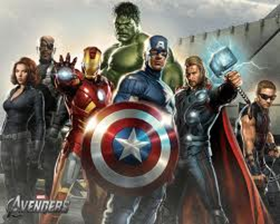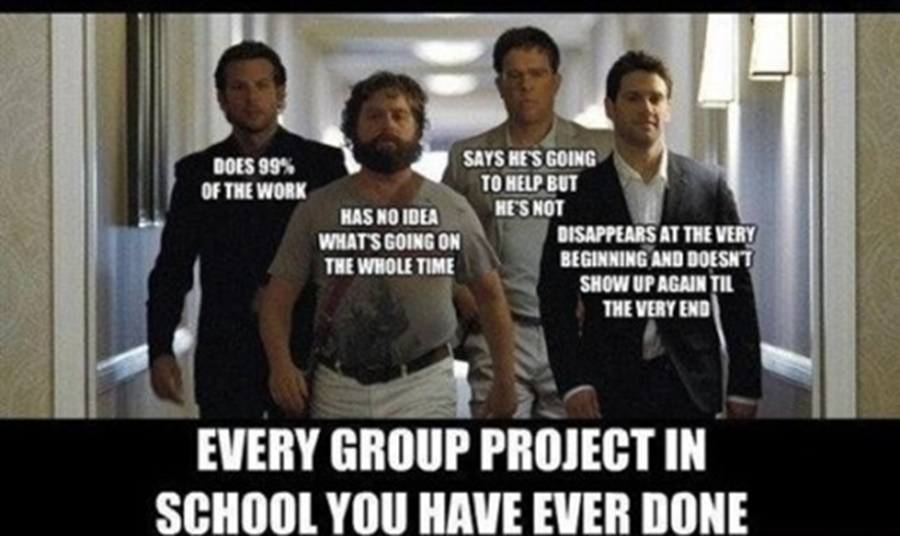Group Work
Why Should I Care?
Some students love working in groups, and others hate it. Some professors love assigning group work, and others loathe it. Nonetheless, the college experience cannot be complete without a group work activity. Here is some insight into how to succeed in group work, without letting everyone else do all the work.
This lesson has 3 parts
- Group Dynamics
- Roles
- Leadership and Personality
What is Group Work?
Group work refers to learning experiences in which students work together on the same task, according to the State University of New York at Buffalo (SUNY). Group work enables peer learning. If students interact with each other, they might have a positive learning experience. Group work is also associated to the kind of environments students will encouter outside the classroom in the workplace.
By definition, a small group is defined by five characteristics (Devito, 2020):
(1) a collection of individuals who
(2) are connected to one another by some common purpose,
(3) are interdependent,
(4) have some degree of organization among them, and
(5) see themselves as a group.
There are pitfalls to group work, such as poor collaboration, and lack of coherence of the final product. It is important to clarify the roles of each member, and to deal with leadership styles and personalities. The first thing to remember is that group work is about collaboration, so be sure to have an open mind about what the other members of the group will propose.
York University Group Work Tutorial
-
Group Dynamics
Groups are an important topic of study for many social scientists, but especially for psychologists, who focus on the personal interactions between members. This is called group dynamics. In psychological terms, not all groups are the same. You might have a group of friends, be part of a particular Facebook group, and your family is certainly a group. In sociological terms, you can be part of large groups such as a cultural group, a linguistic group, or a religious group.
The Avengers are a Group, or a Team?
When it comes to school work, the appropriate term would be a team, which is a subset of small groups, with higher levels of commitment, clearly defined roles, and where work is put it to produce content.
Collaboration does not necessarily mean that everyone has their hands on the product at all times. Most times collaboration means that the work is passed along a production line, whether that's a newspaper, a car plant, or a school. Think of teachers, they collaborate with each other, but you rarely see them in groups. So often, tasks are best done alone.
Many students associate group work to sitting around a large table with 2-5 colleagues and talking about the project. This might be useful in the early stages, but group work doesn't mean you have to do all the work in the same room at the same time.
Advantages of Teamwork
BenefitMost fromof the work we do is done in teams, in some way, shape or form. Think of any organization, institution, corporation. These are all forms of teams. The main benefits are division of labour, and sharing of knowledge. Teamwork is quite beneficial when the group is made of diverse people, in age, culture, gender, skills, competencies, and lived experience.
Disadvantages of Teamwork
Groups have both advantages and disadvantages. Some problems and issues can profittake greatlyup frommore smalltime groupto interaction, especially ifdo the memberswork. are knowledgeable and interact effectively. In fact, some projects are simply too big for only one person and so group work is essential. Other problems and issues are best tackled alone; often, one expert is able to make a better decision than a group or several groups of non-experts.
Perhaps the most important advantage is that a group brings different perspectives, resources, and knowledge to an issue. In this regard groups are perfect learning environments; we teach others and we learn from others. In a problem-solving group, members will feel they’re a part of the solution. In business situations, worker commitment to, say, a new company policy is often crucial in determining whether the solution works or not.
Among the disadvantages, groupsMeetings can be time-consuming when even phonelong or Skype conferences are often difficult to arrange.schedule. It’sGroup notdynamics always easytend to findfavour thea rightconsensus timeview, forwhich allmay sixbe or more peoplerefractory to interact.disagreements. Another potential disadvantage is that members may feel pressure to agree with the majority or with the supervisor or senior member of the group and not to voice any disagreements or alternatives. And it’s easy for perspective overload to occur; sometimes too many choices work against effective decisions (Iyengar, 2010).
-
Tasks and Roles
paragraphTeams work best when tasks and roles are clearly defined. This should be established early in the process. Tasks are a piece of work to be done or undertaken. They should be assessed for difficulty and the time needed to complete them. Roles are the functions assumed by a person in a particular situation.
To avoid conflict, groups should agree on a few rules before they start work.
If there is disagreement, how do we decide, authoritarian rule, consensus or vote?
Example: The assignment is to produce a 6 page research report on the History of Hockey in Asia, using at least six high quality sources. Groups are made of three persons.
The group meets and decides to list the tasks and define the roles. They split the work. The time needed for some tasks is difficult to estimate. They agree on deadlines for each task. They agree on their roles.
Tasks
- Find 18 sources on Asian hockey history
- Select 4-8 sources that are high quality
- Write a plan for the paper
- Ensure enough sources
- Write the paper
- section on Canadian hockey history
- section on Asian hockey history
- Format the paper and reference list
- Proofread the paper
- Print and/or Submit
Roles
Researcher: to find sources, read them, and write short summaries of their content. Produce annotated bibliography.
Writer: to write the introduction, body paragraphs, and conclusion. Integrate sources to one paper.
Editor: to revise the paper, edit language, grammar, syntax, and formatting. Double-check citations, APA style and references.
-
Leadership and Personality
paragraph
. Small group interaction develops in much the same way as a conversation; there are five stages: opening, feedforward, business, feedback, and closing.
References and Further Reading
Beyerlein, M. M. (Editor) (2013). Work Teams: Past, Present and Future. Springer Netherlands.
Devito, J. A. (2020). Essentials of Human Communication. Ch.9 Small Group communication, Pearson Education.
Lipton, L. & Wellman, B. M. (2010) Groups at Work: Strategies and Structures for Professional Learning. MiraVia LLC.
State University of New York at Buffalo (SUNY-Buffalo). (2023). Group Work. https://www.buffalo.edu/catt/develop/teach/group-work.html


